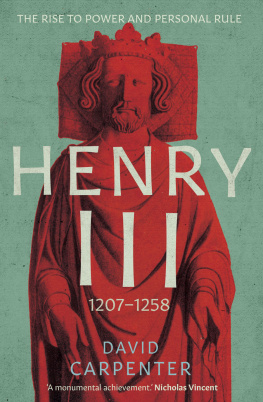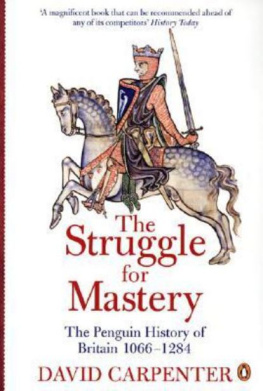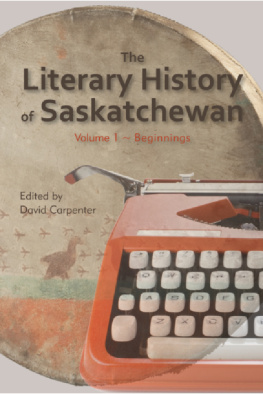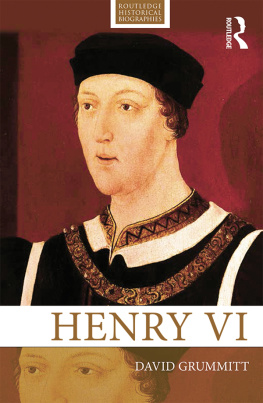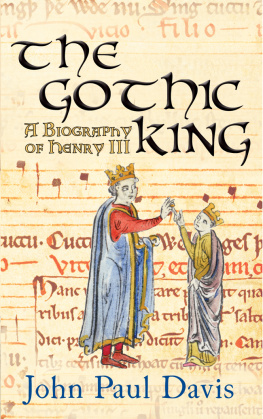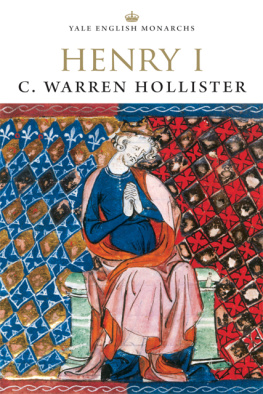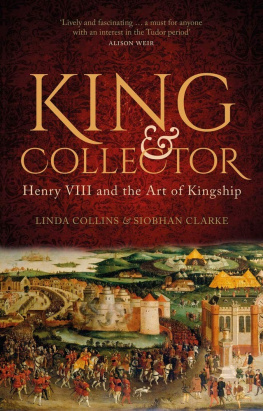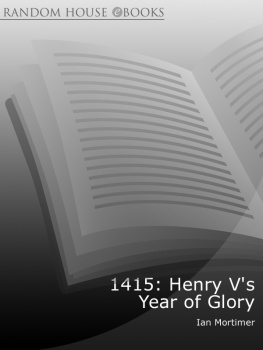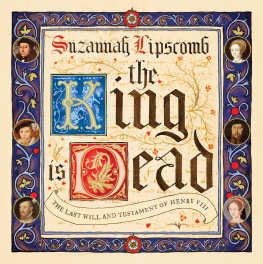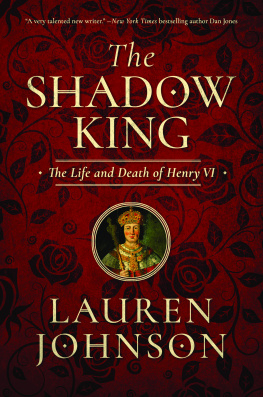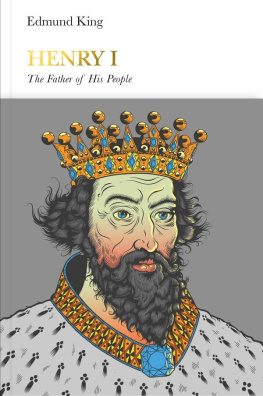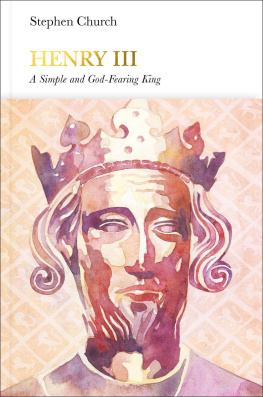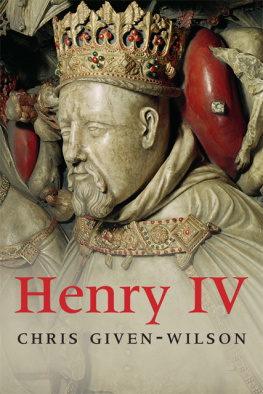HENRY III

Copyright 2020 David Carpenter
All rights reserved. This book may not be reproduced in whole or in part, in any form (beyond that copying permitted by Sections 107 and 108 of the U.S. Copyright Law and except by reviewers for the public press) without written permission from the publishers.
For information about this and other Yale University Press publications, please contact:
U.S. Office:
Europe Office:
Set in Baskerville by IDSUK (DataConnection) Ltd
Printed in Great Britain by TJ International Ltd, Padstow, Cornwall
Library of Congress Control Number: 2020934243
ISBN 978-0-300-23835-8
A catalogue record for this book is available from the British Library.
10 9 8 7 6 5 4 3 2 1
To Jane, Katie and James
CONTENTS
ILLUSTRATIONS
PLATES
MAPS
GENEALOGICAL TABLES
PREFACE
Dont touch the Aga, its hot. These were the first words I remember spoken when I arrived at Westminster Abbey as a four-year-old boy in 1951, little taller than the Aga itself. My father had been appointed a canon of Westminster and we had travelled up together from Stanmore where he had been rector. I remember sitting in a car and seeing the flashing lights of London (it was already dark) through the window and then, when the car (driven by one of my fathers old parishioners) broke down, sitting on the back seat of a bus and playing with a little blue plastic man. In 1985 I was with my father again when, having retired, he walked away from the Abbey, after thirty-four years as canon, archdeacon and latterly as dean.
It might be natural to think that, given my long association with Westminster Abbey, I was always destined to write a biography of its builder, King Henry III. But the truth is more complex. Growing up at the Abbey was in some ways a constricting experience with the constant fear of complaints if I or my brother made too much noise in the cloisters or the Abbey garden. Compulsory attendance at the 10.30 Sunday service left me with a lifelong feeling of release at getting out of church. Later, as a teenager at Westminster school, and in the year before university working in the Abbey Library, I did begin to appreciate the beauty of the Abbeys architecture and sculpture but this hardly made me think very much about Henry III. Indeed, Henry was hardly celebrated at the Abbey. There was no effort to mark the 700th anniversaries of either the consecration of his new church on 13 October 1969 or of his death on 16 November 1972. As an undergraduate, reading history at Christ Church, Oxford, I spent an enjoyable summer term studying England in the central middle ages with my tutor, John Mason. And yet, curiously enough, we jumped from King John to King Edward I and left out Henry III altogether. We did the same the following year when studying Bishop Stubbs Select Charters Illustrative of English Constitutional History. I never objected and indeed never asked why. For a third year special subject, I chose not the one on Henry III and Simon de Montfort, but British Policy and the making of the ententes 18981908. For a while I thought of doing a doctorate on some related topic of diplomatic history.
In the event, my doctorate grew out of my work on Stubbs Select Charters. My plan was to investigate how far magnates were able to corrupt the juries central to the new legal procedures introduced by King Henry II. It was not a topic capable of much development, given the state of the evidence, but it did lead me, via some interesting cases, to Oxfordshire and an eventual thesis about the sheriffs of Oxfordshire in the first half of the thirteenth century. The thesis was hardly publishable as a book but, as my supervisor John Prestwich perceptively observed, it was good preparation for investigating many aspects of thirteenth-century history. It enabled me to explore the running of local government, the structure of local society and the course of high politics, for many of the sheriffs were leading ministers of the king. It led to articles on the changing nature of the sheriffs office, the social and economic position of the knightly class, and the fall of Henry IIIs great minister Hubert de Burgh. It was only with these and other articles out of the way that I began to think, with no one else aspiring to do so, that I might be qualified to write a full-scale biography of Henry III.
I began work on this biography in the 1980s and have written parts of it intermittently over the following years. When, however, the 2015 Magna Carta anniversary year was over, I wrote and rewrote the narrative of the whole reign from start to finish, so I hope the account is not disjointed. The resulting biography will appear in two volumes. This volume runs from Henrys birth in 1207 through to the great political revolution of 1258 that stripped him of power. It thus covers his early life, his minority and its aftermath, and then the whole of his personal rule from 1234 down to 1258.
In writing about the reign of Henry III, the first debt of all historians is to the wonderful sources on which accounts are based. These are firstly the records produced by the kings government and especially the rolls of the chancery recording the charters and letters issued by the king. Henrys letters in particular often take us very close to his personality and policies. Because, moreover, all the charters and letters end with the place and date of their issue, it is possible to see where Henry was on the great majority of days each year. Since the charters have witness lists, it is possible to see the leading figures with him at court.
Mention of printed editions takes us to a second debt, namely that to the many editors who, since the nineteenth century, have put so much of the source material of the period into print. The Public Record Office itself was responsible for publishing, partly in full Latin, partly in English calendar, thirty volumes of chancery rolls. Its labours were completed by the Henry III Fine Rolls Project which has published online searchable English translations of the two million words of the fine rolls.
Another debt, of course, is to all the historians who have written about the period. One naturally starts here with Sir Maurice Powickes two-volume study of the reign, Henry III and the Lord Edward, published in 1947, the first to make full use of the then recently published chancery rolls. Powicke wrote until inspiration came was a remark once made to me by John Prestwich, and certainly in Henry III and the Lord Edward there are sections where it is very difficult to see where he is going.
After Powicke, little appeared on the reign of Henry III for many years, apart from a thought-provoking article on whether Henry had a policy, published by Michael Clanchy in 1968. Its use by later scholars has transformed our understanding of many aspects of Henrys reign. An important stage in that transformation came in 1985 with the first of the Thirteenth Century England conferences. It was held in Newcastle upon Tyne and organized by Peter Coss and Simon Lloyd. I am proud to say that, by the luck of the draw, I gave the very first paper (on the gold treasure of Henry III). Since then the Conference has been held every two years and, after its move from Newcastle, has been organized by historians from the universities of Durham, Aberystwyth and Cambridge. Its printed proceedings contain a wealth of new thinking and information about the reign of Henry III. At the same time many important books on the period have been published as well as papers in periodicals and collections of essays. Much new work is also forthcoming and I am grateful to those who have sent me their discoveries and given me advanced sight of future books and papers. I thank them in the appropriate place. Every time I look at what has appeared in
Next page
